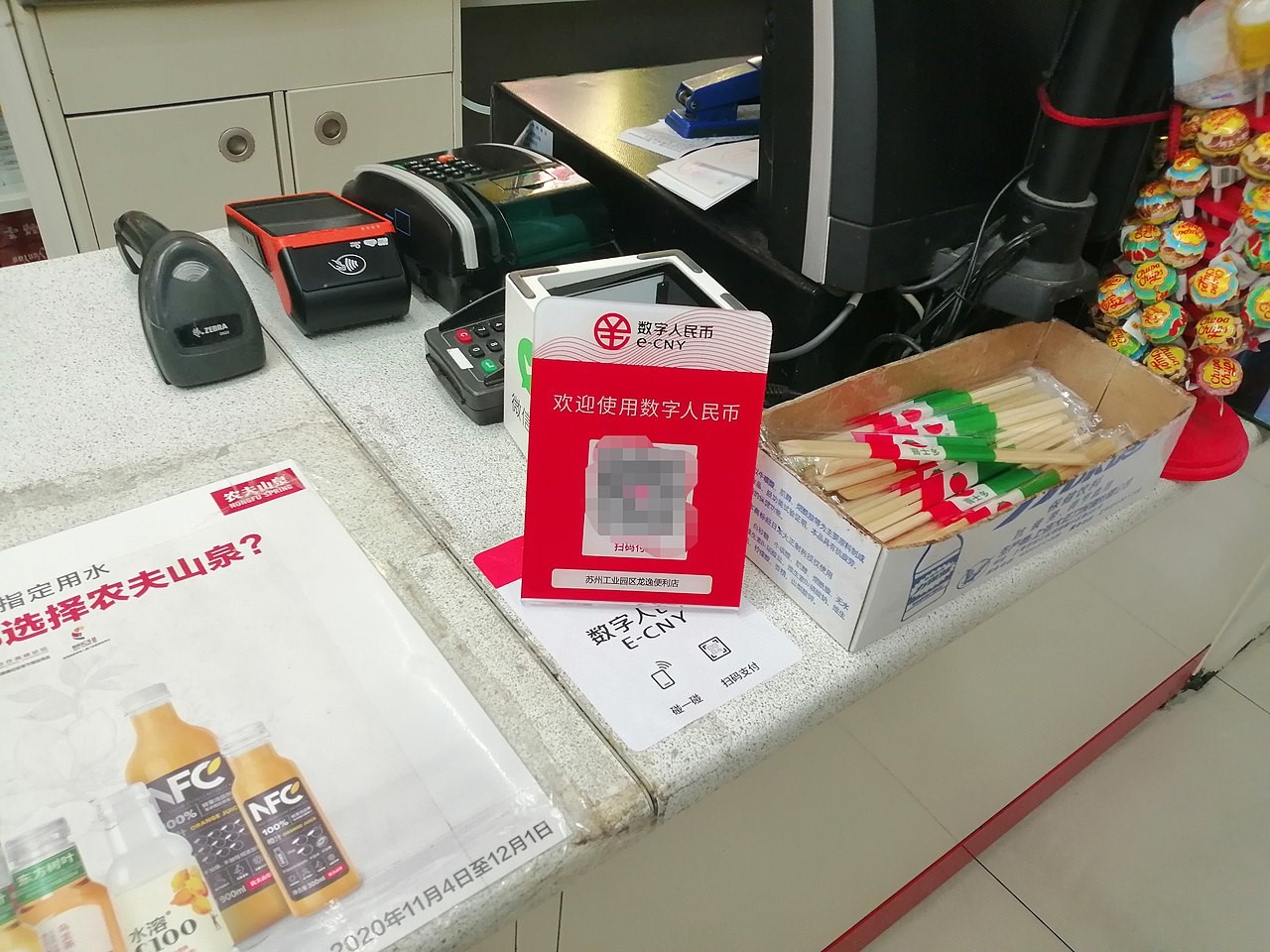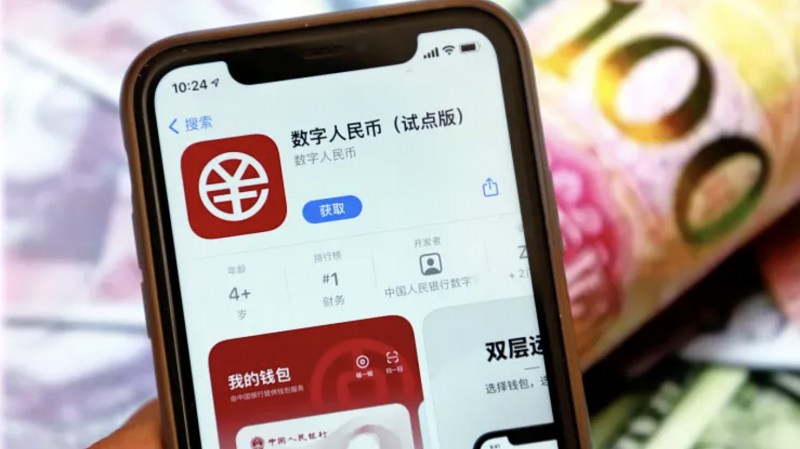When China finally entered the world of digital currency, it became the first digital currency to be issued by a major economy. Known by various names, including digital RMB and e-CNY, the digital currency is issues through the People's Bank of China. Research for the digital currency began in 2014, and development of the e-CNY system was approved in 2017. Today, trials are taking place in test cities all across China.
What is e-CNY?
The Digital RMB is a central bank digital currency (CBDC) backed by the People's Bank of China. It is a digital version of the physical RMB and functions in all ways as a legal tender. China has been pushing for e-CNY adoption in recent years, as it aims to move away from foreign currency dependence to strengthen the power of e-CNY, allowing it to be used in domestic and international trade.
 A staff member shows off the e-CNY system during the Global Digitial Trade Expo in December, 2022.
A staff member shows off the e-CNY system during the Global Digitial Trade Expo in December, 2022.
Despite its label as a digital currency, the e-CNY system is not a type of cryptocurrency but it instead the same as cash and coins in China. The value is the same as the RMB, which is a fixed-rate currency, meaning its value is not subject to market fluctuations. For China, the ultimate goal is for the e-CNY to replace cash spending entirely.
Benefits of Digital Currency
The transition to digital currency improves the efficiency and security of all financial transactions in China. The e-CNY system also enables users to bypass a banking institution and engage in peer-to-peer transactions, reducing the cost of any fees and the speed at which transactions take place. There is also increased transparency and traceability of transactions, as all transactions made through e-CNY are recorded. This level of record-keeping helps prevent financial scams, money laundering, and other illegal activities.
The e-CNY system also helps improve China's financial inclusion, allowing even people without bank accounts to participate in the digital economy. However, for its widespread adoption, there would need to be internet access and proper infrastructure in more rural or remote areas. Nevertheless, it would provide equal access to digital banking systems in all corners of China.
How does the Digital RMB work?
In 2022, the first Beta version of the digital yuan app was launched in China for both iOS and Android users. The app, called 数字钱包 or shuzi qianbao, operates like an online wallet where users can track purchases and store their e-CNY balance. The app allows users to organize their e-CNY into multiple wallets, link it to other bank accounts, and set controls, such as daily spending limits.
 A QR code displayed in a convenient store in China which is used to pay for goods with e-CNY.
A QR code displayed in a convenient store in China which is used to pay for goods with e-CNY.
As the e-CNY system continues to evolve, it has integrated with some of China's largest platforms and retailers, including WeChat Pay and Alipay, and can be used at most major retailers in the country. The peer-to-peer transfer system also allows casual transactions between friends and family, and even allows you to pay a local street vendor.
Challenges of the Digital Economy
While the digital economy comes with many benefits, there are a few concerns that individuals and financial institutions should be aware of. The technology is still new, and it is unknown what impact this will have on traditional banking systems, who may no longer be needed as intermediaries. The transition also brings questions about privacy and security, as systems could be susceptible to hacking or possible surveillance.
So far, the launch of e-CNY has been off to a slow start, and the CBDC has been handing out millions of yuan to promote its usage. As of the end of 2022, total circulation of e-CNY in China was only 100 billion yuan ($14 billion). Cities that have been testing the system are optimistic, however, and officials in Suzhous have set a goal of having 2 trillion yuan ($300 billion) in transactions taking place by the end of 2023.
Is Digital Money The Future?
Digital money is becoming a part of our daily lives and is likely to play a significant role in the future of money. Using digital money makes our everyday lives easier through faster and more convenient transactions, and with a few simple clicks or taps, money can be sent anywhere in the world for any large or small purchase. While there are still challenges to be addressed, digital money is likely to play an increasingly important role in the future of money. Its convenience, security, and accessibility make it an attractive option for many people, and as technology continues to evolve, we can expect to see more innovations in the digital money space.
